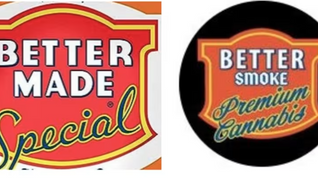January 13, 2025

Any good retailer – regardless of the industry – takes consumer preferences into consideration when making business decisions.
Cannabis retailers are no exception.
Regulated marijuana sales are expected to reach $58 billion by 2030, according to the MJBiz Factbook.
And consumer preferences will dictate how retailers shape their product offerings and inventory in 2025.
Growing interest in several marijuana product categories underscores the importance of retailers stocking inventory that anticipates shifts in consumer demand.
Below is what the industry can expect from cannabis consumer preferences as we head into the new year:
Cannabis consumer preferences and trends
Pre-rolls and pre-ground flower
Between June 2023 and June 2024, pre-rolls experienced the biggest increase in sales revenue, which jumped 11.9% during that period.
It’s clear pre-rolls are showing sustained growth, and that trend looks to continue.
Similarly, pre-ground flower in larger, “ready-to-roll” packaging, such as half-ounce and 1-ounce pouches, also is growing in popularity.
In any given marijuana store, flower and pre-rolls combined typically comprise 50%-60% of total sales.
The appeal of pre-rolls is mostly about convenience, and consumers enjoy a broad range of potency options.
Retailers also cater to different preferences and needs with ground flower, providing customers with flexible options in a convenient format.
Vapes
Vape cartridges are gaining popularity across various demographics.
In fact, the cannabis vape market was valued at $5 billion in 2023, according to Delaware-headquartered Global Market Insights.
Vapes offer consumers a quick way to consume with a level of subtlety that many find appealing.
In markets such as Massachusetts, where carts are priced as low as $25 per gram, vapes provide consumers with a cost-effective and long-lasting option.
At Boston-based Silver Therapeutics, vape cartridges make up 20%-25% of our cannabis retail sales.
Edibles
Marijuana-infused products are generally experiencing growth, though preferences are shifting within this category.
For instance, gummies are the more preferred edibles option, while infused chocolates sales are declining.
This shift could stem from a two key factors:
Gummies offer greater variety in flavor and flexibility.
Gummies are typically more cost-effective to produce than chocolate, as cocoa prices have surged over the past few years, making cannabis-infused chocolate more expensive to manufacture.
On average, edibles represent approximately 18% of marijuana retail sales.
Beverages
According to San Francisco-headquartered Grand View Research, the global cannabis beverages market was valued at $1.2 billion in 2023, and its compound annual growth rate from 2024 to 2030 is forecast at 19.2%.
Many consumers, such as Millennials and Gen Zers, view marijuana as a more healthful option than alcohol.
Thus, consumers are choosing to sip on discreet, cannabis-infused seltzers rather than beer or wine.
Relaxation and sleep products
Cannabis retailers report increasing consumer interest in products geared toward specific wellness needs, particularly products that address anxiety and support rest.
For example, edibles formulated for better sleep and a sense of calm have been steadily rising in popularity.
This comes as no surprise, as stress levels are heightened with the current economic and political climate.
2024 MJBiz Factbook – now available!
Exclusive industry data and analysis to help you make informed business decisions and avoid costly missteps. All the facts, none of the hype.
Featured inside:
Financial forecasts + capital investment trends
200+ pages and 49 charts highlighting key data figures and sales trends
State-by-state guide to regulations, taxes & market opportunities
Monthly and quarterly updates, with new data & insights
And more!
Get the Facts
Data-based inventory
Today’s consumers have a wide array of product preferences.
So, how can marijuana retailers optimize inventory to meet customer demands and ensure the most profit?
Using data from platforms such as Boston-based Canold, Bend, Oregon-headquartered Dutchie and Seattle-based Headset is vital to understanding diverse consumer demographics and tracking the popularity of products within each group.
This data-driven approach informs wholesale decisions across locations, helping a singular or multilocation marijuana retailer stay aligned with local preferences.
Cannabis inventory best practices
In my experience, carrying 200 to 250 stock-keeping units (SKUs) is the optimal range for providing variety while keeping inventory manageable.
Carrying a strategic product assortment allows marijuana retailers to meet customers’ needs and ensures that each location remains well-stocked with high-demand items.
To ensure your inventory is hitting the mark, seek customer feedback through surveys and store interactions, share insights with wholesale buyers and hold product demos with manufacturers to assess new offerings.
Don’t forget to rely on your budtenders to test and evaluate potential retail products to ensure any new additions align with customer needs and preferences.
This feedback-driven approach will enable retailers to quickly adapt and meet evolving consumer demands in 2025 and beyond.





Hozzászólások